Nvidia announced its Tegra K1 mobile processor last week at the 2014 International CES. This monster of a mobile chip has 192 GPU (graphics processing unit) cores, compared to 72 in last year’s Tegra 4. It is so powerful that it can run Epic Games’ Unreal Engine 4, which is used to create graphically beautiful console and PC games.
In fact, it has more processing power than the PlayStation 3 and the Xbox 360. Not bad for a tablet chip. It shows that mobile computing is racing ahead at an accelerated pace, and it won’t be long before we see visuals that will be truly astounding on mobile devices. And it should be interesting to more than just gamers because the Tegra K1 will likely go into a bunch of non-gaming mobile and automobile applications that rely upon better visual quality.
Tony Tamasi, senior vice president of content and technology, was at the unveiling last week at the Cosmopolitan Hotel in Las Vegas, just before the start of the 2014 International CES. We interviewed him about the details behind Tegra K1 and what it will be capable of doing.
The Tegra K1 will be the brains of next-generation smartphones and tablets. But it will also be used to bring supercomputing capability to your automobile. Nvidia will have two versions: a 32-bit version with four ARM Cortex A15 central processing units and a 64-bit version with dual CPUs based on Nvidia’s Project Denver.
Here’s an edited transcript of our interview with Tamasi.
GamesBeat: What did Jen-Hsun [Huang, CEO of Nvidia] mean when he was saying this was one of the biggest projects you’ve ever done?
Tamasi: Certainly the boldest. A lot of people didn’t expect us to be able to get GeForce or Kepler into mobile at all. They didn’t think we’d be able to get the power down, make it efficient enough. They thought it was too big. What he means by that is we’ve spent — Most of the company is invested in building GPUs. A large part of that investment, particularly with the Kepler architecture, was invested in making it super-efficient and very scalable. If you aggregate that investment, plus the Tegra investment, it’s an enormous undertaking.
When we started talking to customers about this a while ago, a lot of them thought we were crazy. “There’s no way you’ll get a GeForce class thing into a mobile power budget.” All those demos you saw there were in seven-inch tablet power budgets. Small tablet power budgets. We have data showing the power efficiency of Tegra K1 versus a bunch of other things. It’s about one and a half times as efficient as anything else on the market right now.
GamesBeat: It seems like you could use Tegra K1 as the foundation for new kinds of machines, as opposed to things that people already know.
Tamasi: Yeah. Shield is our first step in that direction. It’s a new kind of machine. There are already customers working on some pretty exciting stuff with both variants of Tegra K1 – things that you know, that you’re familiar with, and new classes of machines that are similar to what you’re familiar with, but different in some way. They look different. They’re attached to different things. The thing that’s cool, though, is that it’s all because this is just GeForce. No developer has to learn anything new. It just works.
GamesBeat: Does “K1” mean anything? Why not call it Tegra 5?
Tamasi: We didn’t call it Tegra 5 because that made it seem too incremental compared to Tegra 4. It’s a radical leap compared to Tegra 4, from a GPU perspective. Tegra 4 wasn’t even a unified architecture. It was ES2. It was built on what we called the Aurora GPU architecture. Tegra K1 is a full Kepler implementation for mobile. It’s not in any way watered down. That’s bringing it into a whole new class, so we felt we needed to signify it in some way. Of course, the “K” is for Kepler (the code name for Nvidia’s latest 3D graphics chip architecture).
GamesBeat: Is there a name for the 32-bit part?
Tamasi: That’s the A15 CPU, ARM Cortex A15. The way to think about it is that ARM generally licenses CPUs. What Denver is, we license the architecture and do our own implementation. Qualcomm does that with Krait, for example. Apple did that with their CPU, A7.
GamesBeat: With something like the A15, then, you’re sort of putting together Lego pieces?
Tamasi: Essentially. We can modify it somewhat, but we’re not architecting the CPU from the ground up. With Denver, it’s our own design from scratch.
GamesBeat: What was the comparison for Tegra 4? I didn’t see a chart that lined up the performance against the rest of the range.
Tamasi: For graphics, depending on what you’re doing, it would be three to six times the performance compared to Tegra 4. Maybe more. Tegra 4 is Open GL ES2, not even ES3, so from a feature set perspective, it’s not Kepler. It’s not GeForce. It’s not that class of machine.
GamesBeat: As timing goes, it seems like the 32-bit one will ship first and then the 64-bit will ship later?
Tamasi: That’s fair to say. As far as when they’re actually going to ship, I don’t think we’re talking about that. But you’d expect the 32-bit one to ship first.
GamesBeat: But all the demos were done on real silicon?
Tamasi: Yeah, everything was run on real chips. Some of those were on reference platforms. Some of them were running on full-on tablet devices. It’s all real. There’s no smoke and mirrors.
GamesBeat: Does the power budget matter a lot in cars as well?
Tamasi: It matters to some degree. There’s a space constraint, and to some degree a heat constraint as well. If they want to have a bunch of electronics, the heat has to go somewhere, and they have reliability issues. You have a little bit more volume, but not as much volume as you’d think. They pack a lot of stuff in a car.
GamesBeat: Are you not at the point where you could talk about close partners for the car products?
Tamasi: We’ve been working with BMW and Audi and a bunch of other guys. Whether we can announce who we’re working with specifically on Project Mercury, I don’t think we’re disclosing that yet.
GamesBeat: Is there a Shield 2 in the works that would use Tegra K1?
Tamasi: [chuckles] We haven’t announced that, but it seems like it might be logical.
GamesBeat: But it seems ripe for Android tablets.
Tamasi: Oh, yeah. Or phones, for that matter. It’s the same basic power budget and efficiency, the same power envelope as Tegras. I’d say smartphone/superphone products through tablets through clamshells, micro-consoles, gaming handhelds, all that stuff.
GamesBeat: I’d heard both the game streaming and the G-Sync announcements before. Is there anything particularly new about those?
Tamasi: We showed 1080p [at] 60 [frames per second]. We showed streaming from 6,000 miles away with low latency. That was playable. It has some profound implications in a couple of ways. One, for cloud gaming itself, you can potentially build fewer data centers, which helps on the economic side. It’s not to say we’ve solved it, but we’ve made great progress on the latency piece.
On the G-Sync side, there’s a slide Jen-Hsun showed with seven partners and three different classes of display, all available and shipping in Q2. That’s all news.
GamesBeat: With 192 processors on Tegra K1, what’s the comparison to Tegra 4?
Tamasi: Tegra 4 was — Fragment shader was four times three times four, so that’s 48, and vertex shader was 24, so 72. We had separate vertex and fragment shaders, where this is a unified machine. The clock here is higher too, quite a bit higher.
GamesBeat: Was it your secret target to be able to run games using Unreal Engine 4?
Tamasi: I don’t know about a secret target. [laughs] But making the choice to put Kepler in, we knew we’d have all of Kepler’s capabilities. That’s full DirectX 11 or, in this case, full OpenGL. We’ve had a close relationship with Epic for more than a decade. We worked with them to implement OpenGL 4.4 back in for Unreal Engine 4.
As soon as you do that, everything just works. In fact, a lot of these demos — We didn’t carefully craft those demos. Epic did them for console or PC. They didn’t even see these things running until maybe the week before Christmas, and neither they nor us had to touch them. It just worked. That’s one of the things Tim Sweeney was really impressed by.
It’s pretty powerful, because it allows the developers using those engines to just bring it over. There’s no technical barrier to having their content running here. You have next-gen features with more horsepower than the current game consoles. That’s a capable platform for gaming.
GamesBeat: What OSes can the Tegra K1 run?
Tamasi: Anything that runs on ARM. We’re primarily targeting Android, but it could run Windows RT or Linux. SteamOS is just a variant of Linux.
GamesBeat: We’ve heard about the possibility of dual-boot machines, running something like Android and Windows. There was the rumor last week that Intel was going to be promoting this. I assume that something like Tegra K1 could do that?
Tamasi: Totally capable, yes. One of the exciting things about something like this — Let’s say you were do to SteamOS, or really anything. When you have the capability to run the full game engine, the game just has to recompile for the binary instruction set, like x86 versus ARM. In many cases that’s a compiler option. They don’t have to implement a new renderer or do anything. Just compile it and run.
We’ve done a lot of work to bring what I’ll call the middleware over to ARM. We’ve been doing this for a while. We did Unreal Engine 3, id Tech, Unity, all these engines and all this work to bring it over. We’re trying to get rid of any technical impediment to games running on any platform.
GamesBeat: Are you aligned with Valve on Steam boxes?
Tamasi: All their Steam Machines shipped with Nvidia graphics in them. We worked hard with Valve to do a bunch of optimization for OpenGL and for Linux. You’re going to find a lot of the partners building Steam Machines building them with Nvidia.
Valve’s vision for SteamOS is to create a PC-class ecosystem, but around SteamOS. In that ecosystem, it’s open. People are free to choose whatever they want. They can choose Intel integrated if they’re super cost-focused. They can choose AMD if they believe they’re aligned with AMD for whatever reason. But from a Linux graphics perspective, we’re clearly the leader. Customers recognize that.
GamesBeat: Can you stream Steam content over to the TV?
Tamasi: That’s what we showed. It was Steam using Big Picture. That actually is the way you navigate it. Then it streams to Shield in console mode, which is just a Shield with an HDMI cable connected to your TV and an Ethernet cable in the back. You can sit there and fire up Steam, navigate in Big Picture, buy a game, download and install it, play it on your TV. You get all of the benefits of the PC — horsepower, digital distribution — but on your TV. You can do wireless or wired. You get higher bandwidth on wired, so you get higher resolution and higher frame rate, but it supports either.
It’ll be interesting to see how the whole Steam Machine, SteamOS thing turns out. Linux gaming largely isn’t a factor, but you never want to count Valve out.
GamesBeat: A subset of 65 million Steam users is not a bad market, but in the grand scheme of things, it’s not necessarily going to make many waves for the other guys. It has to come with bigger things, I think — getting the bigger hardware companies involved in the machines, leading with a game like Half-Life 3.
Tamasi: Yeah, make sure you ask Gabe about Half-Life 3. [laughs]
GamesBeat: What do you plan as far as marketing for Shield or other products?
Tamasi: With Shield one, we built it because we saw a need to lead the way. We were dipping a toe into Nvidia selling to the end user, selling consumer electronics. We had to learn a lot, so we started with a small number of channels and a very limited geography. It’s gone quite well. Then you scale up to all markets, all geographies.
It fills the need that we thought it would. It’s the best Android gaming platform out there. Developers like it. It’s the best platform for development on Android because it’s a superset of everything. It has controller. It has touch. You can hook up a big screen. It’s the most capable SOC. They like it because they can cover everything, and at the end of the day it’s still just Android.
We’re at the beginning of a change. Android has obviously been super successful – here, and in a bunch of other countries. In other countries, consoles are less developed than they are here in North America. There, you’re going to see Android devices connected to TVs. With SOCs like Tegra K1, you have something better than an Xbox 360 or PS3 with next-gen capabilities that you can attach to the TV, with all the benefits of being in the Android ecosystem.
I have all the consoles at home, but it sucks that all my stuff is scattered everywhere. I have Steam here, Xbox Live there, PlayStation Network, over there, Google Play. I want to have all my stuff in one place. In a lot of markets, Google is as well-positioned to do that as anyone. If you look at the trajectory mobile is on, particularly the capabilities of mobile relative to the other platforms, it’s exciting. Google is working hard at that stuff. They’re not going to sit still.
VentureBeat's mission is to be a digital town square for technical decision-makers to gain knowledge about transformative enterprise technology and transact. Learn More

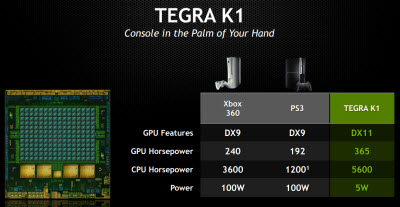
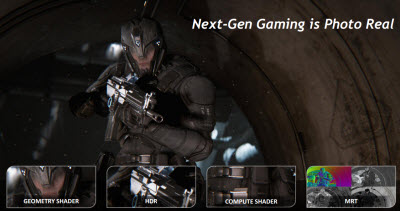
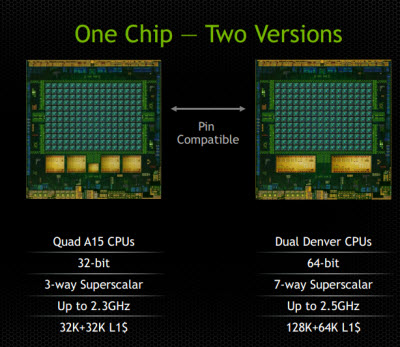

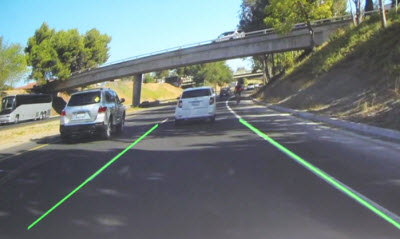

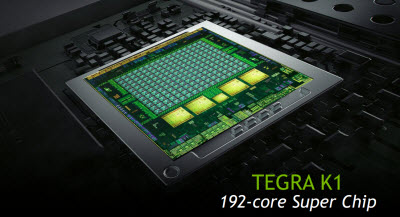

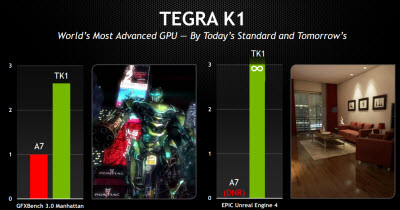




![Reblog this post [with Zemanta]](http://img.zemanta.com/reblog_e.png?x-id=3af86043-e970-4c3f-8997-98fd857b55c8)
